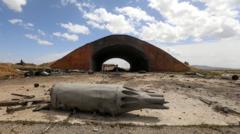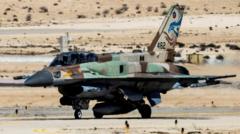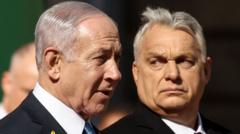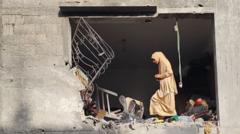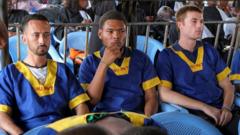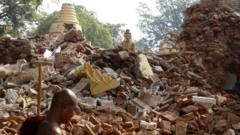The militant group is grappling with military setbacks, financial difficulties, and growing dissent within its ranks after recent conflicts.
**Hezbollah Faces Challenges and Changing Dynamics Post-Conflict**
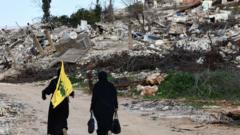
**Hezbollah Faces Challenges and Changing Dynamics Post-Conflict**
Hezbollah's struggle for survival and support amid mounting pressure and internal discontent.
Hezbollah, the Shia Muslim group with a dual identity as a militia and political entity in Lebanon, finds itself at a pivotal juncture following the devastating impacts of last year's conflict. This clash not only resulted in the destruction of key border areas like Kfar Kila but also exposed vulnerabilities within the organization. On 17 September, a tragic event unfolded when several low-tech pagers, distributed by Hezbollah to its members for emergency alerts, were rigged with explosives by Israeli forces. It marked a significant turning point that inflicted considerable harm and disarray on the group.
Among the casualties was a nurse, referred to as Adam for safety, whose pager exploded, leading to the tragic loss of several fingers and partial blindness. Despite his injuries, Adam remains unwavering in his commitment to Hezbollah, expressing pride in enduring his wounds as a testament to sacrifice for a 'righteous cause.' But Adam's story also reflects the growing frustrations among Hezbollah members regarding insufficient support for reconstruction after widespread destruction, revealing cracks in the group's traditional loyalty base.
Hezbollah’s extensive military and political power has begun to wane following the aggressive Israeli response which claimed thousands of lives, devastated critical infrastructure, and eliminated many of its top leaders, including long-time chief Hassan Nasrallah. As Lebanon's new president Joseph Aoun assumes power, the political landscape has shifted. Aoun's administration has emphasized the need for establishing a singular military authority in Lebanon, indirectly targeting Hezbollah's arms.
Furthermore, financial aid tied to disarmament conditions threatens to alienate the very communities that Hezbollah has long supported. Many of these constituents view the group as an integral part of their identity and way of life. As a result, while many supporters remain loyal, some quietly express growing dissatisfaction with the group's direction and decisions made in the wake of the war.
With Iran's financial backing also facing restrictions from international scrutiny, Hezbollah's future may depend on how well it navigates these challenges. Factors such as regional alliances, ongoing military operations in neighboring Syria, and potential negotiations over its substantial arsenal create a turbulent atmosphere for the organization.
As Hezbollah grapples with internal dissent, financial struggles, and a shifting political environment, the next steps for the group are uncertain. These challenges could reshape its influence not only within Lebanon but across the broader Middle Eastern landscape, prompting a reassessment of its role and strategy moving forward.
Among the casualties was a nurse, referred to as Adam for safety, whose pager exploded, leading to the tragic loss of several fingers and partial blindness. Despite his injuries, Adam remains unwavering in his commitment to Hezbollah, expressing pride in enduring his wounds as a testament to sacrifice for a 'righteous cause.' But Adam's story also reflects the growing frustrations among Hezbollah members regarding insufficient support for reconstruction after widespread destruction, revealing cracks in the group's traditional loyalty base.
Hezbollah’s extensive military and political power has begun to wane following the aggressive Israeli response which claimed thousands of lives, devastated critical infrastructure, and eliminated many of its top leaders, including long-time chief Hassan Nasrallah. As Lebanon's new president Joseph Aoun assumes power, the political landscape has shifted. Aoun's administration has emphasized the need for establishing a singular military authority in Lebanon, indirectly targeting Hezbollah's arms.
Furthermore, financial aid tied to disarmament conditions threatens to alienate the very communities that Hezbollah has long supported. Many of these constituents view the group as an integral part of their identity and way of life. As a result, while many supporters remain loyal, some quietly express growing dissatisfaction with the group's direction and decisions made in the wake of the war.
With Iran's financial backing also facing restrictions from international scrutiny, Hezbollah's future may depend on how well it navigates these challenges. Factors such as regional alliances, ongoing military operations in neighboring Syria, and potential negotiations over its substantial arsenal create a turbulent atmosphere for the organization.
As Hezbollah grapples with internal dissent, financial struggles, and a shifting political environment, the next steps for the group are uncertain. These challenges could reshape its influence not only within Lebanon but across the broader Middle Eastern landscape, prompting a reassessment of its role and strategy moving forward.

